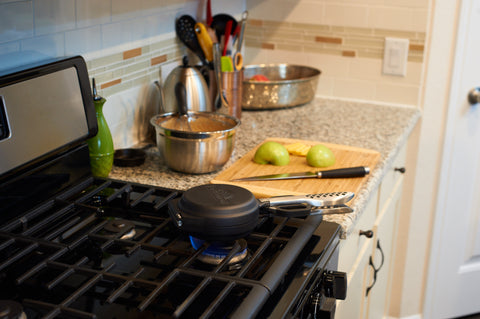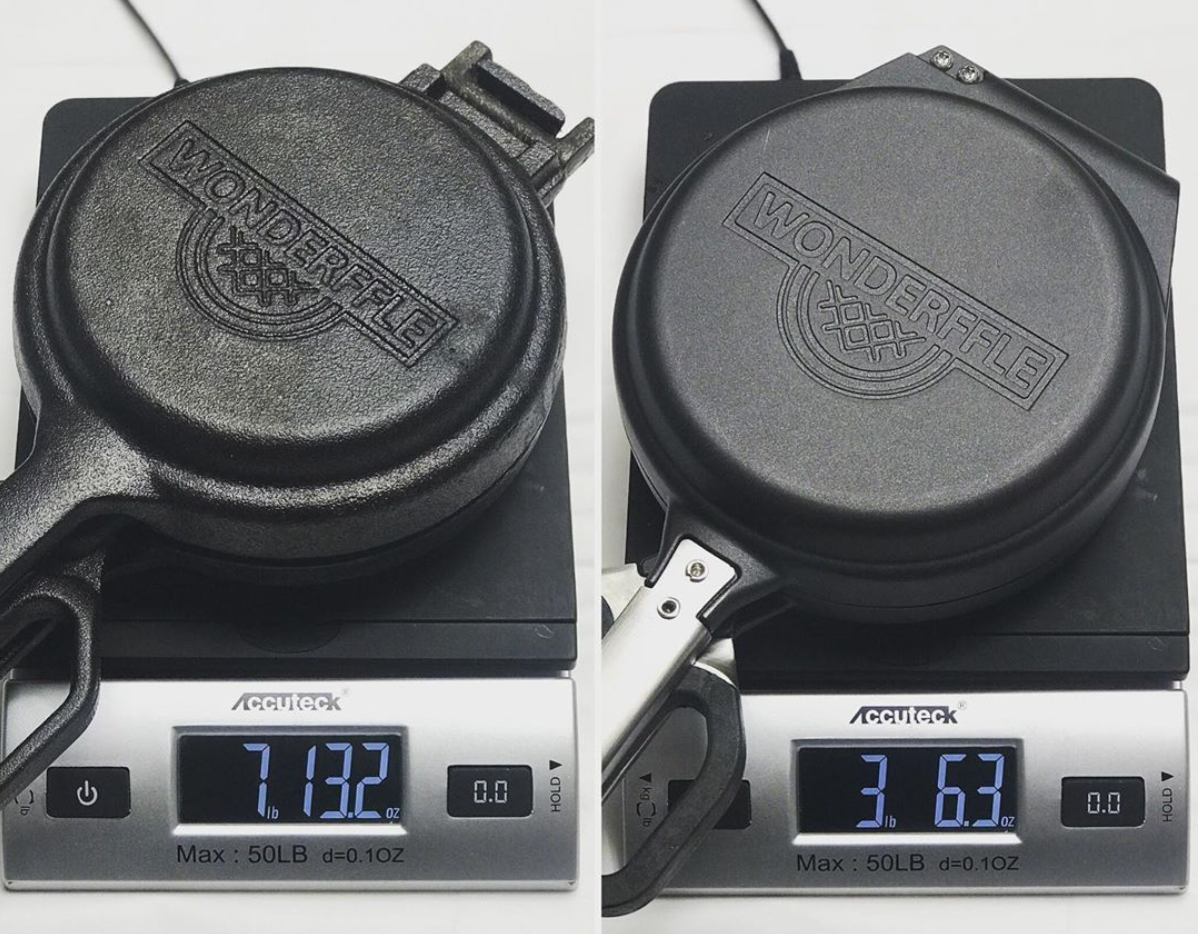
Choosing Between Cast Iron and Cast Aluminum
by Mike BradfordWith the introduction of the Cast Aluminum Stuffed Waffle Iron, Wonderffle now has two product models from which to choose.
The two materials are well-suited for cookware for good reason.
Cast Iron has been used in cookware for centuries. The earliest references of its use in the West date back to the 7th century AD. Its use in Asia dates back even further. A staple in households all over the world, cast iron's popularity in cookware began to wane in the mid 20th century but has resurged in recent years.
On the other hand, aluminum's use in cookware is relatively new, having its origins in the 20th century as a result of the development of synthetic nonstick coatings. The most abundant metal found in earth's crust, aluminum is used in about half of all cookware manufactured worldwide.
As it can be difficult to decide which material to choose, this brief comparison between the two models can help you to make an informed decision.
Weight
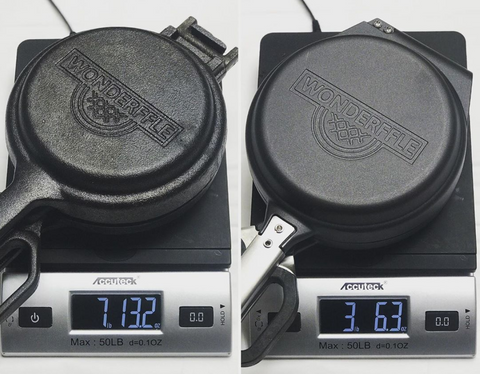
The most noticeable difference between the two models is their weights. The cast iron model is over 4 pounds heavier than its cast aluminum counterpart. This has major implications in the cooking process — since it requires flipping the unit — and in shipping costs.
Nonstick Cooking
The cast iron and cast aluminum models achieve nonstick cooking surfaces in different ways. A natural nonstick surface can be created on cast iron using a process called seasoning.

The cast aluminum model has a synthetic, yet food safe, nonstick surface that does not require seasoning. However, abrasive tools cannot be used on cast aluminum, as they can scratch its nonstick surface.
Cast Iron has a reputation of being a healthier option than aluminum. Some perceive as a benefit the fact that dietary iron leaches into food. However, people already consuming extra iron through multivitamin supplements or those with hemochromatosis may want to consider avoiding cast iron cooking.
The major health concerns with aluminum cooking is due to its synthetic nonstick surface. Since tools are not required when cooking with The Wonderffle Stuffed Waffle Iron, there is little chance that the nonstick finish can peel and get into food.
The notion that using aluminum cookware causes Alzheimer's disease has been refuted by The Alzheimer's Association, citing studies that "have failed to confirm any role for aluminum in causing Alzheimer’s".
Cooking Surfaces
Both models can be cooked on gas and electric stovetops and outdoor grills (with direct heat applied). However, only the cast iron model can be used on induction cooktops. It is also more suited for cooking in the oven, as the cast aluminum model is oven safe only up to 335°F (170°C). Finally, cast iron cookware can damage glass cooktops. Therefore, the aluminum model is the better option in that case.
Thermal Properties and Heat Resistance
Cast Iron has a low thermal conductivity and high heat capacity. This means that the cast iron model will require a longer time to preheat and will cook at lower temperatures compared to the cast aluminum model. In addition, the cast iron model can be used in the oven for high temperatures, as previously mentioned. Cast iron also has a high heat retention, which means that the cast iron model takes much longer to cool than the cast aluminum model.
Unlike those of the cast iron model which are one piece with the cooking pans, the handles of the cast aluminum model are made from the heat resistant stainless steel. In addition, the center pan handles have a thermoplastic overmold to further reduce heat retention. The result is that cooking with the cast aluminum model can be done with bare hands, while cooking gloves are required when cooking with the cast iron model.
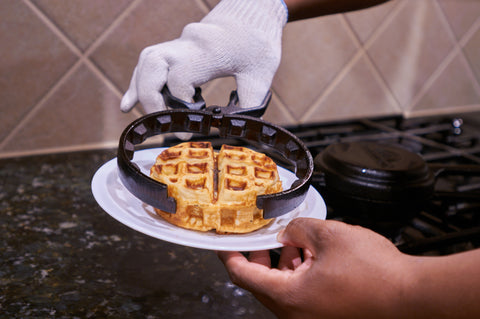
Dimensions
While both models have nearly identical dimensions, the aluminum casting process achieves greater precision. The parts of the cast aluminum model fit together tighter than those of the cast iron model. Very runny batters, such as this one made from only eggs and heavy cream, will likely leak between the seams of the center pan of the cast iron model.
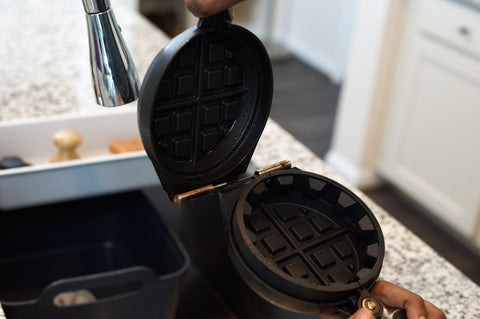
There is also significant difference between the hinge assemblies of the two models. The top and bottom pans of the cast aluminum model are connected by a hinge stainless steel assembly comprised of a male/female pin. The two pans can be separated by pulling them in opposite directions along the axis of the hinge.
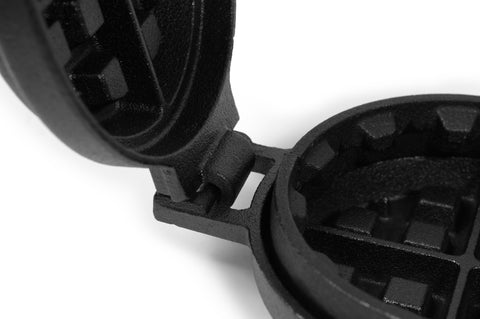
The hinge on the cast iron model is one part with the top and bottom pans. The parts fit loosely together and will not stay together if the center pan is lifted from the bottom pan when the unit is open.

